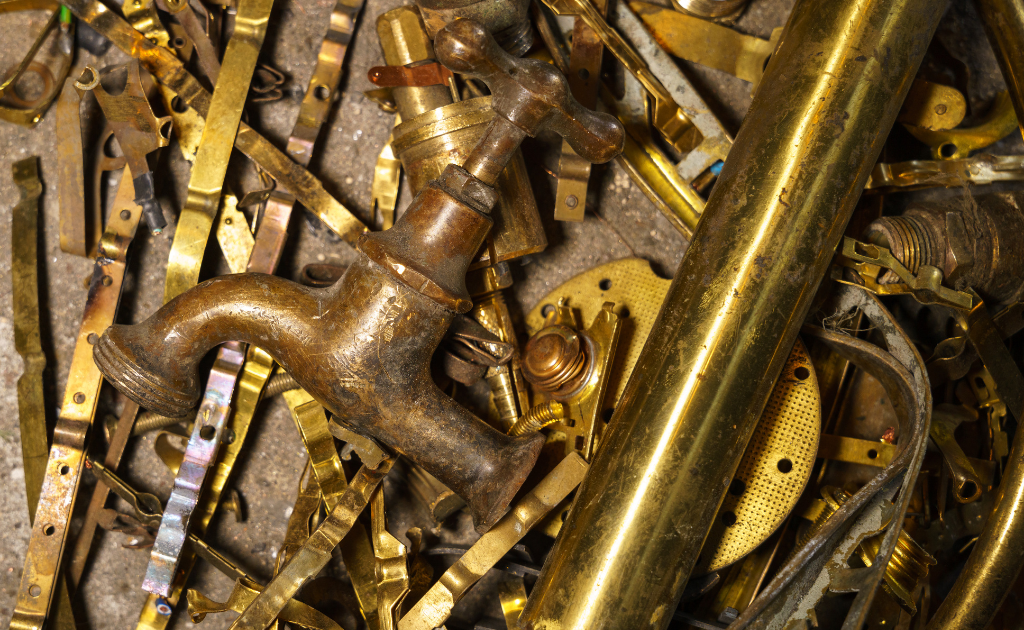Why Brass Scrap Recycling is More Profitable Than You Think

When people think of scrap metal recycling, they often picture piles of steel or aluminium. Brass doesn’t usually come to mind immediately, yet it’s one of the most valuable metals in the recycling world. In fact, brass scrap recycling can be far more profitable than you might imagine – both for individuals clearing out their garage and for businesses looking to turn waste into revenue.
So, what makes brass scrap stand out? Let’s break it down.
1. Brass Has a High Market Value
Unlike common metals such as steel, brass carries a higher price per kilogram. This is because brass is an alloy made from copper and zinc – two metals that already hold strong demand globally. Since copper prices often surge, the value of brass follows the same upward trend.
For recyclers, this means even a small batch of brass scrap can generate a surprisingly good return. Old plumbing fixtures, taps, electrical fittings, and mechanical parts can all add up to a decent payout.
2. Recycled Brass Retains Quality
One of the biggest reasons brass recycling is so profitable is that the metal doesn’t lose its quality during recycling. Unlike some materials that degrade when reused, brass can be melted down and reformed countless times without losing strength or durability.
Manufacturers love this – it means they can rely on recycled brass to make everything from musical instruments and electrical components to marine hardware and architectural fittings. The demand for brass scrap is therefore consistently strong.
3. Lower Processing Costs Compared to Mining
Mining new copper and zinc to create brass is expensive, energy-intensive, and harmful to the environment. Recycling brass, on the other hand, requires far less energy and fewer resources.
Because of this, industries actively prefer buying recycled brass over newly mined material – it’s cost-effective for them and environmentally responsible. This steady industrial demand ensures recyclers can fetch competitive prices.
4. Wide Range of Sources for Scrap Brass
Brass is everywhere. From old bed frames and light fittings to plumbing pipes, keys, doorknobs, and even shell casings – the number of everyday items containing brass is surprisingly high.
This availability means that homeowners, plumbers, builders, and even hobbyists can collect brass scrap and sell it for cash. It’s often overlooked, which makes finding brass scrap all the more rewarding.
5. A Win-Win: Profitable and Sustainable
Profitability isn’t the only factor here – brass scrap recycling also helps reduce waste, lowers carbon emissions, and supports a circular economy. By recycling brass, you’re not only putting money back in your pocket but also helping industries reduce reliance on mining and cut down on environmental damage.
Final Thoughts
At first glance, brass might just look like an ordinary yellowish metal hiding in old pipes or fixtures. But once you understand its market value, durability, and endless recycling potential, you’ll see why brass scrap recycling is more profitable than you think.
So, the next time you come across old fittings or leftover construction materials, don’t just toss them aside – check if they’re brass. That small pile of scrap could turn into a surprisingly valuable payday while also supporting a greener planet.
- Art
- Causes
- Crafts
- Dance
- Drinks
- Film
- Fitness
- Food
- Jogos
- Gardening
- Health
- Início
- Literature
- Music
- Networking
- Outro
- Party
- Religion
- Shopping
- Sports
- Theater
- Wellness



